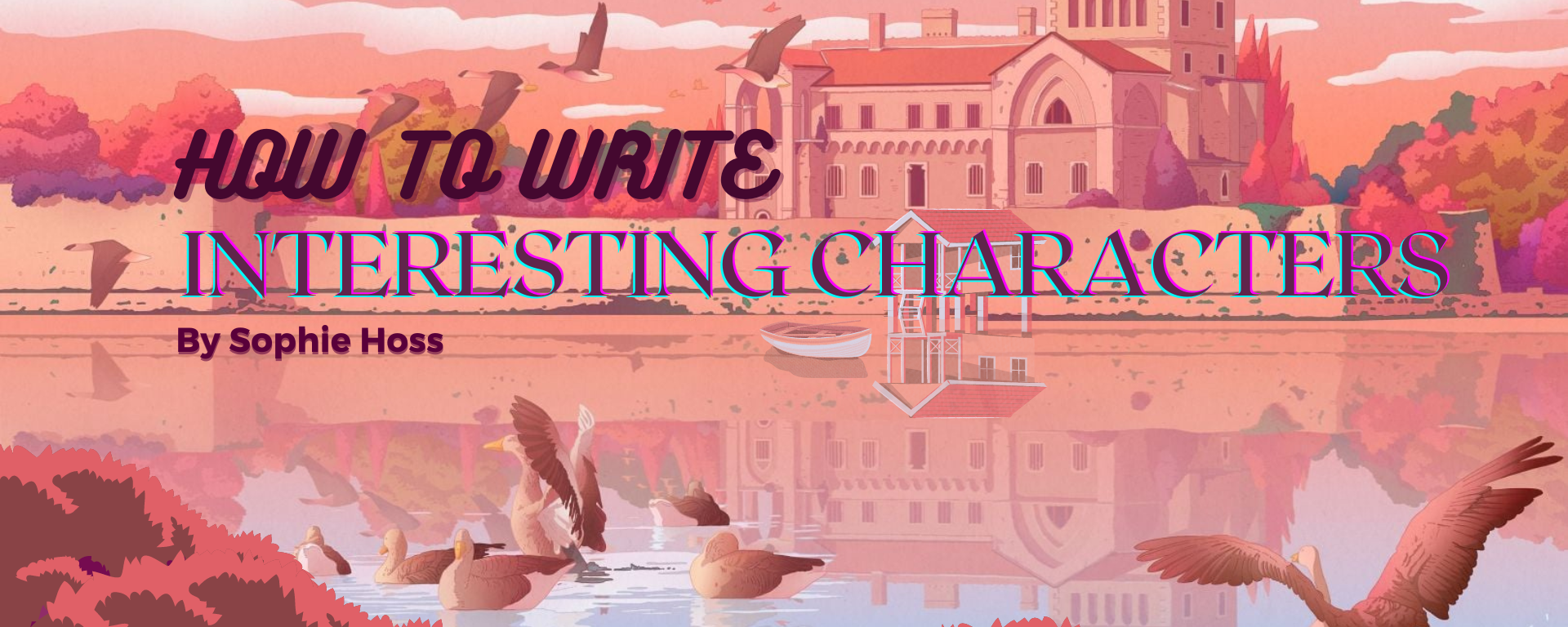Sophie Hoss
Engaging characters are arguably the most important component of any story. If you’re invested enough in a novel’s characters, you’re willing to stick with them through the entire plot. When you begin crafting fiction of your own, characters are probably one of the first elements you want to focus on. Think of them as the heart and soul of your story. After all, without good characters, readers don’t have much to grab their attention—even the most thrilling, high-concept spectacle can fall flat if the characters themselves aren’t compelling. So, what exactly goes into developing an interesting character?
- Backstory
Everyone has a past, and your character is no exception. Try making a small profile with information about your character’s upbringing, family, and significant life events. With a backstory comes a key trait that most interesting characters have in common: something to hide. A character with a secret is inherently accompanied by dramatic tension that impacts not only their dynamics with every other character but also their internal monologue. One thing to be careful of with backstory is letting it dominate the narrative’s present. Most of the backstory should remain off the page and used only for your personal reference. Oftentimes, the most interesting things are what we leave unsaid; you can reveal a few key details of your character’s backstory, but avoid lengthy dumps of exposition that stall the plot and bog down the reader with unnecessary info. Assume your reader is intelligent enough to understand the implications and fill in the blanks on their own.
- Contradictions
People are messy. We say things we don’t mean, we do things we don’t want to do, and we have emotions that constantly push and pull us in different directions. All this complexity should be embedded in the characters you write: it’s a big part of what makes them feel real. Show us a mortician who’s afraid of death; a butcher who’s a vegetarian; a priest who’s an atheist; a governor who’s an anarchist. Your character’s contradictions don’t have to be as extreme as these, but they should be substantial enough to create dimension and complexity. Don’t worry about having your character “make sense” all the time—have you ever met anyone in real life who does make perfect sense?
- Goals
Interesting characters are characters who want something. If a character doesn’t have goals, they feel static, and it’s difficult to make a static character interesting to action-seeking readers. Your character’s goal doesn’t have to be big and grand—it can be something as simple as wanting to get out of bed in the morning. Giving your character goals is a way of creating conflict in a story, and it makes it easier for the reader to understand your character’s motivations. Allowing for better insight into a character’s goals allows a reader to root for them and appreciate what they do.
- Don’t Worry About Likeability
A common misconception is that our characters need to be likable. While likeability is good and well, your readers don’t have to like your character to be interested in them. In fact, if you try too hard to make your character likable, it may actually backfire. For example, have you ever met someone who is just too nice? People like this can come across as disingenuous and even bland. Bearing that in mind, your character should maintain a level of authenticity throughout: readers are more interested in characters who feel real than characters who are simply “nice.” You’ll probably find that the less you worry about likeability, the more likable your character actually becomes.
- Push Past the Archetypes
Character archetypes exist for a reason—they’re a tried and true formula that readers immediately identify with. We can recognize a “mentor,” a “hero,” an “outlaw,” or a “sidekick” the moment they appear. Having a character fill an archetypal role is by no means a bad thing. In fact, it can present a great opportunity to subvert readers’ expectations by digging beyond the surface level. For instance, if you have an elderly wizard mentor figure, think about what unique quirks or hobbies he has—does he have a passion for French poetry? An addiction to crossword puzzles? A dream of becoming a standup comedian? The more specific details you include, the more three-dimensional your character will feel.
Final Thoughts
It doesn’t take much to bring your character development to the next level. By incorporating a few key details that make your character unique, you can make them truly come alive on the page and pique your reader’s interest. As you begin to develop your characters, reflect on some of your favorite characters and think about what makes them interesting to you. By analyzing the characterization techniques these writers used, you’ll be able to understand the craft on a more intimate level and implement the tools in your own work. Happy writing!


